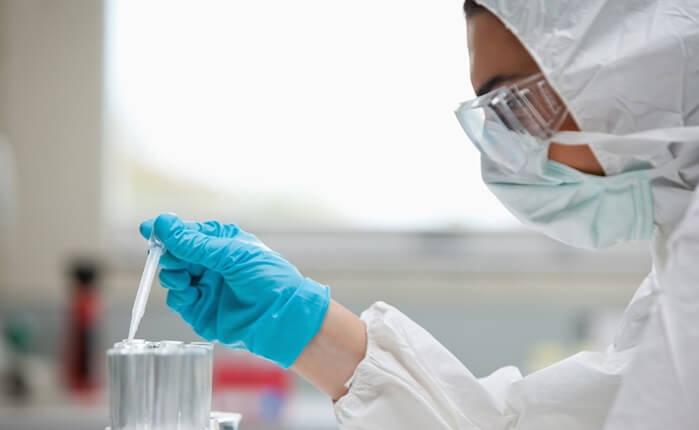Biological Compatibility of Medical Service
The biological evaluation of a medical service is aimed to ensure that material contacting the human body will not release toxins which can cause partial or systemic cytotoxicity, carcinogenicity toxicity and reproduction toxicity, and other risks, such as inflammation, immune responses, or thrombosis.
The Food and Drug Administration (FDA) referred to ISO 10993, adopted by international health authorities, academia, and industry, to formulate the regulation. According to the FDA, the Management Regulation for Medical Devices classifies medical devices as three types based on the risk level:
Level 1: Low Risk
Level 2: Moderate Risk
Level 3: High Risk
Clinical trials should be carried out for products classified as level 3 and partial level 2. Relative information and references are provided when applying for clinical trials. For example, a preclinical study report and a nonclinical safety evaluation (biological compatibility) that correspond to Good Laboratory Practice (GLP) are provided by the laboratory to prove the security and quality of the product.
ISO 10993 Biocompatibility Evaluation
Cytotoxicity Test
Toxic substances could induce a change in cell morphology, including vacuolization, peeling, cytolysis and disruption of membrane integrity, and even cell death. MTT is a yellow tetrazole used in the mitochondrial respiratory chain. It is reduced to purple formazan in living cells. MTT yellow compounds can act on the respiratory chain of mitochondria via living cells, generate blue formazan crystals in succinate dehydrogenase, and detect the absorption of light to determine cell survival
Skin Sensitisation Test
The purpose of the guinea pig maximization test (GPMT) is to determine whether the medical device and the material contain ingredients that cause a contact allergic reaction and delayed type hypersensitivity reaction (Type IV). GPMT is the most sensitive of the sensitization assays. Through test article extraction, the test article extracts are mixed with Freund’s adjuvant and injected via intradermal injection. The sensitization reaction might be amplified for evaluation of the sensitization potential.
Test methods:
Skin Sensitization Test (Closed-patch Method)
Skin Sensitization Test (Maximization Method)
Reference guideline:
ISO 10993-10 Tests for irritation and skin sensitization
OECD #406 Skin sensitization
Skin Irritation Test
The skin irritation test is used to determine the potential presence of skin irritants in medical devices or materials. The medical device is extracted in a 0.9% saline solution and is applied via a gauze patch on the backs of rabbits. Skin irritation of medical device is assessed by observing skin irritation symptoms.
Reference guideline:
ISO 10993-10 Tests for irritation and skin sensitization
OECD #404 Acute dermal irritation/corrosion
Intracutaneous Irritation Test
The intracutaneous irritation test is to determine the potential presence of skin irritants in medical deviceS or materials. The medical device is extracted in a 0.9% saline solution and is injected intracutaneously into rabbits. Intracutaneous irritation of a medical device is assessed by observing skin irritation symptoms.
Reference guideline:
ISO 10993-10 Tests for irritation and skin sensitization
OECD #405 Acute eye irritation/corrosion
Eye Irritation Test
The eye irritation test is to determine the potential presence of eye irritants in medical devices or materials. The medical device is extracted in a 0.9% saline solution and dropped into the eye of a rabbit. Eye irritation of the medical device is assessed by observing cornea, iris, and conjunctiva damage.
Reference guideline:
ISO 10993-10 Tests for irritation and skin sensitization
OECD #405 Acute eye irritation/corrosion
Acute Systemic Toxicity Test
The purpose of the acute systemic toxicity test is to determine whether using the medical device can produce any potentially harmful physiological effects through the injection of extracts.
Reference guideline: ISO10993-11 Tests for systemic toxicity
Pyrogen Test
The pyrogen test determines the potential presence of pyrogens in the medical device or material. The medical device is extracted in a 0.9% saline solution and injected into the marginal ear vein of a rabbit. The pyrogen test on rabbits is based on the measurement of the increase in the rabbit’s temperature upon being injected with a medical device that could have a contaminant of the pyrogen type.
Reference guideline: USP 151 Pyrogen Test
Endotoxin Test
Endotoxin is derived from gram-negative bacteria and is capable of causing lethal shock. The turbidimetric technique is based on the development of turbidity after cleavage of an endogenous substrate. The chromogenic technique is based on the development of color after cleavage of a synthetic peptide-chromogen complex (Boc-Leu-Gly-Arg-pNA). Free pNA produces a yellow color that is monitored by a spectrophotometer at 405nm, and the sample concentration is calculated from a standard calibration curve.
Implantation Test
The implantation test can be used to assess the local effects of a medical device or material. The test article is implanted in a rabbit (subcutaneous, muscle, bone, etc.). Then, the clinical physiological condition is record and the histopathological effect is observed by microscopy. The results are used to evaluate the adverse effects of the test article.
Reference guideline: ISO 10993-6 Tests for local effects after implantation
Hemolysis Test
Hemolysis is the rupturing of red blood cells and the release of hemoglobine into surrounding fluid. Usually, in vitro assay is used to detect hemolysis in blood units, including:
- Direct contact: Hemolysis caused by physical forces (eg, changes in osmotic pressure) or chemical interactions with red blood cells.
- Extraction: Hemolysis caused by test substance extracts by a commercial hemoglobin detection kit.



You must be logged in to post a comment.